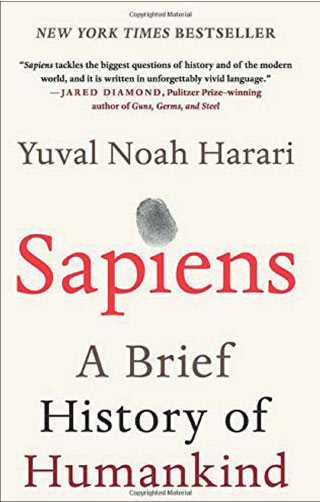Tuesday Feb 25, 2025
Tuesday Feb 25, 2025
Monday, 7 December 2020 00:30 - - {{hitsCtrl.values.hits}}
 |
 |
| Prof Chandima Gomes
|
Man, the Wise or Man, the Unwise?
Professor Chandima Gomes, a Sri Lanka born scientist now attached to the University of Witwatersrand in Johannesburg, South Africa, in a recent tele-interview, theorised why Homo sapiens, Man the Wise, is so quick to believe in and accept stories that are obviously absurd, ill-founded and flawed (available at: https://www.youtube.com/watch?v=IA-sd80Uv4s&t=1234s).
The theme of his interview was whether science and religion were compatible with each other and the State should be freed from religion. But to set the background for presenting his thesis, he treated his viewers with a fine analysis of human psychological build-up that affects behaviour. Gomes began his presentation by drawing a distinction between understanding and judgment. Understanding that differs from person to person is dependent on two factors: one’s accumulated knowledge and his analytical skills.
Accumulated knowledge is simply a store of experiences recorded within a person and retrievable at will. Thus, to use it, one should have experiences gathered and stored within the system in the first place and is able to tap it whenever it is needed. Analytical skill is the ability of a person to break a whole thing into small parts and examine them separately, their nature, how they behave and what impact they would have on the whole thing being studied and so on.
Psychological inertia: Fear of change and love for status quo
According to Gomes, one may understand something, but it does not necessarily mean that he is able to make a sound judgment about it. That is because in-between understanding and judging there is a barrier that blocks the conversion of understanding to judgment. Gomes called it ‘psychological or mental inertia’, the mental feeling of fearing change and loving the status quo. This comes from another mental state called ‘mental stress’, an affliction from which Homo sapiens has been suffering throughout history.
In early history when humans were living on trees, a simple sound may have caused stress in him. It causes fear forcing him to stay put where he is (loving the status quo) or run away for safety (accepting the feared change). Anthropologists say that this latter reaction is disliked and therefore to avoid it, people get into social groups. In the social groups, people have ‘hates and loves’. When one loves another, he ignores even the biggest flaw in him. But in the opposite, when one hates another, he looks for even the most trivial weakness in him and amplifies it. Gomes did not say it, but this is fertile ground for conspiracy stories.
A conspiracy story can be either offensive or promotional. 
Offensive conspiracy stories
In the case of offensive conspiracy stories, an absurd story is created to amplify the hate and all those followers in the hate group are eagerly wating for the appearance of the story. A recent example in this regard is the conspiracy theory created by President Donald Trump to justify his objection to counting postal votes. He said that those votes should not be counted because in transit, they were intercepted by Russia and China and the votes were changed in favour of his rival Joe Biden. This is an absurd story but many Americans who hate both Russia and China have accepted it in the blink of an eye, as demonstrated by them appearing before TV cameras.
A claimed foreign hand in prison riots in Mahara
A similar conspiracy story was created when there was a riot in the remand prison at Mahara in Sri Lanka a week ago. A leading government politician hinted at a foreign hand in the riots without naming the foreign hand. It was a better conspiracy story because anyone who hates the government of a foreign country could place that country in the picture and live in suspense forever savouring the story. Thus, the creators of conspiracy stories are also ‘masters of human psychological bases’.
Promotional conspiracy stories: Myths, legends and miracles
Conspiracy stories are also created to promote someone or some group which one loves. They are actually not conspiracies against them, but miracles created, or stories concocted for promoting their cause. They are known as myths or legends when they talk about an event in an earlier period. The story of a giant of deep blue complexion called Neela Maha Yodhaya in the service of King Gajaba of ancient Lanka using a massive iron club to cut through the waters of the ocean to create a path for troops to move from Lanka to India is such popular legend taught to Sri Lankan students at schools.
Even when they reach adulthood, the early memory of this giant is fresh in their mind and readily retrieved to praise the glory of their ancestors. When these stories are created to depict a contemporary situation, they are presented in the form of miracles. Those miracles, however much they are unrealistic or abnormal, are readily believed by people whose mind is cushioned to accept them. For them, the miracle is the reality.
The miracle of cobra-relics springing up in Kelani River
Such a miraculous story was created by someone with a purpose a year ago. He made the announcement that he was gifted with 14 pieces of cobra-relic by a cobra-messenger of the legendary Cobra-King Mani Akkhitha suddenly appearing from the waters of River Kelani, a place close to historic Kelani Temple (available at: https://www.youtube.com/watch?v=b3BhK3pAxJ8 ).
These relics as well as the cobra-messenger were on display at the Temple in Kelaniya for devotees to worship. Men and women of all walks of life queued up from early morning battling sun and rain to have a glimpse of the relics that had been sent to them by the Cobra-King Mani Akkhitha. All of them clad in pure white to demonstrate the purity of their mission, including young men and women who are otherwise dressed in denims, were seen worshipping both miracles – relics as well as the cobra-messenger in a plastic bottle – displaying utmost devotion and respect by placing folded hands close to hearts and instantly assuming awe-stricken faces.
Mani Akkhitha, tribal leader turned to a cobra
For them, legendary King Mani Akkhitha was a cobra and the present Kelaniya was his seat of administration. But according to archaeologist Raj Somadewa, as asserted in his popular radio program ‘NethFM Unlimited History’, what is known as Kalyana in history was a place in present Ruhuna State (available at: https://www.youtube.com/watch?v=0tjP3YgREdY&t=1968s) and the legendary King Mani Akkhitha was not a cobra but a leader of a tribal group known as Nagas (available at: https://www.youtube.com/ watch?v=IGtmyzOTG70 &t=2182s).
The popular belief in this miraculous story is a demonstration that evidence-based science can be beaten by emotion-driven psychological states guided by mental inertia, as claimed by Chandima Gomes.
Kautilya: Use magic, occult and fake miracles to deceive the gullible
This type of miraculous stories has been used throughout history by those with vested interests. Even in ancient India, 200 years after the Buddha, Kautilya, economist cum statesman, in his treatise on economics, The Arthashastra, advised the king to engage an agent to deceive gullible people. “An agent shall pretend to be a Naga (cobra) or Varuna (god of water) by painting himself white and showing himself emerging from water by means of a secret entry and exit through a tunnel or underground chamber on the bank. Other agents shall then persuade the enemy of the supposed divinity of the Naga who will grant him whatever he wants, provided he spends a week etc.,” says Kautilya.
This is another piece of advice by Kautilya to king: “A rumour (should be spread) that on full or new moon nights, rakshasas (demons) were eating men alive in the cremation ground or a holy place shall first be propagated. Then, an agent in the guise of a rakshasa shall demand a human sacrifice. Any passer-by, brave or otherwise, shall be killed with an iron club and the death be blamed on the rakshasas.” To make it more effective, Kautilya says that “secret agents, omen readers, and astrologers shall spread the news of devilish manifestations”.
There were ways of frightening people too as recommended by Kautilya: “People can also be terrorised by contriving animal blood to pour out of images of gods held in reverence. Agents shall interpret this as foretelling defeat as a result of which rivers of blood will flow in the city.”
Kautilya: Use of fake miracles to extract money from people
Kautilya had also recommended several ways to deceive gullible people and collect money for the king’s treasury. They include: “building overnight, as if it happened by miracle, a temple or a sanctuary and promote the holding of fairs and festivals in honour of the miraculous deity; exploiting an unnatural happening, such as an unseasonal flower or fruit, by making it into a divine phenomenon; using secret agents to frighten people into making offerings to drive away an evil spirit; playing tricks on people by showing a cobra apparently with many heads, or a stone cobra coming alive; and selling remedies against evil occult manifestations”.
Terrorise people who question fake miracles
But there can be some people who may question the truth of these deceitful acts of a king. Kautilya had a solution for them too: “If people are not taken in so easily, they should be frightened into doing so. Secret agents should give unbelievers an anaesthetic in water and blame their condition on a curse of gods; or a condemned man shall be killed by poison and his death blamed on divine retribution.” This shows to what extent an interested party will go to realise his own personal goals. For them, gullible people are simply yielding hands for their conspiracy stories.
Human cognition and myths
These mythological stories passed down from generation to generation have a purpose, according to Oxford educated historian Yual Noah Harari. In his 2011 book titled ‘Sapiens: A Brief History of Humankind’, Harari says that mythological stories had helped early humans to develop language and later ones to create art and literature. This is a part and parcel of cognitive revolution which humans underwent by acquiring ability to learn, perceive, memorise, and think. That was also the departing point in the evolution of humans compared to other species.
“Legends, myths, gods and religions appeared for the first time with the Cognitive Revolution. Many animals and human species could previously say, ‘Careful! A lion!’ Thanks to the Cognitive Revolution, Homo sapiens acquired the ability to say, ‘The lion is the guardian spirit of our tribe’ This ability to speak about fictions is the most unique feature of Sapiens language,” says Harari.
Worshipping the past is a way to avert fear of change
These myths do not really exist. Yet, millions of people believe them because it is in their own interest to do so. When they suffer from mental inertia, as asserted by Gomes, the way out is to believe in a story relating to past just to forget about having to change in the present. But the world is changing, and people feel those changes. Then, how could they attain salvation? Just by savouring conspiracy stories. Therefore, there is a demand for conspiracy stories. If there is a demand, there should be supply of conspiracy stories too.
The supply is done by those smart people, intent on taking advantage of the gullibility of their victims. The list of such smart people who conspire to create conspiracy stories for their own personal gain is long: politicians, clergymen, civil society leaders, marketers, union leaders, and simple housewives and so on. They create a conspiracy story and throw it into the society at large. Immediately, it is grabbed, absorbed, savoured, amplified, and repeated. This has been the trend throughout the history of Homo sapiens.
Convincing people of absurd stories
Harari says telling effective stories is not easy: “The difficulty lies not in telling the story, but in convincing everyone else to believe it. Much of history revolves around this question: How does one convince millions of people to believe particular stories about gods or nations or limited liability companies? Yet when it succeeds, it gives Sapiens immense power, because it enables millions of strangers to cooperate and work towards common goals. Just try to imagine how difficult it would have been to create states, or churches, or legal systems if we could speak only about things that really exist, such as rivers, trees, and lions.”
Thus, conspiracy stories are about things that do not really exist. But for millions of people, they are true just like the lines on their palms. This false belief has been the main reason for the spread of conspiracy stories throughout the globe.
(The writer, a former Deputy Governor of the Central Bank of Sri Lanka, can be reached at [email protected].)
Discover Kapruka, the leading online shopping platform in Sri Lanka, where you can conveniently send Gifts and Flowers to your loved ones for any event including Valentine ’s Day. Explore a wide range of popular Shopping Categories on Kapruka, including Toys, Groceries, Electronics, Birthday Cakes, Fruits, Chocolates, Flower Bouquets, Clothing, Watches, Lingerie, Gift Sets and Jewellery. Also if you’re interested in selling with Kapruka, Partner Central by Kapruka is the best solution to start with. Moreover, through Kapruka Global Shop, you can also enjoy the convenience of purchasing products from renowned platforms like Amazon and eBay and have them delivered to Sri Lanka.
Discover Kapruka, the leading online shopping platform in Sri Lanka, where you can conveniently send Gifts and Flowers to your loved ones for any event including Valentine ’s Day. Explore a wide range of popular Shopping Categories on Kapruka, including Toys, Groceries, Electronics, Birthday Cakes, Fruits, Chocolates, Flower Bouquets, Clothing, Watches, Lingerie, Gift Sets and Jewellery. Also if you’re interested in selling with Kapruka, Partner Central by Kapruka is the best solution to start with. Moreover, through Kapruka Global Shop, you can also enjoy the convenience of purchasing products from renowned platforms like Amazon and eBay and have them delivered to Sri Lanka.